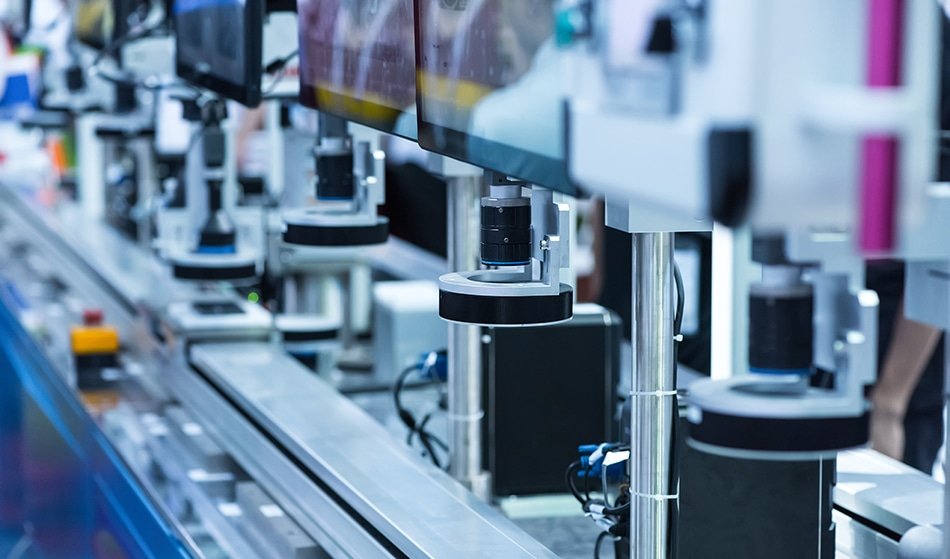In the realm of producing goods, the uniformity of the output in terms of quality is of utmost importance. The presence of faulty goods means more than just tarnishing the reputation of the brand as it will also cause recalls and rework, which are both expensive. Quality assurance, on the other hand, which is a common approach towards controlling quality involves inspecting the components and goods manually is highly susceptible to errors, and can be time-consuming. This is where machine vision comes in; a revolutionary technology that completely automates quality assurance to a very accurate and efficient level.
For GR Industrial Automation Systems, we offer specialized machine vision systems that improve manufacturing quality control. With the installation of sophisticated vision systems, control over the production processes increases significantly in terms of accuracy, rate and reproducibility.
What is Machine Vision?

In the field of machine vision, cameras, and image processing software are used to monitor items as the production line runs. Such systems are able to spot any defect, whether it is a scratch on the surface, a wrong joint, or even a missing part of the product. While human inspectors can be tiring and give varying results with fatigue, machine vision systems can operate 24 hours a day and maintain the same level of precision without fail thus making those systems important equipment in the quality control processes.
Applications of Machine Vision
Different industries have utilized our vision-based solutions to beat complex inspection problems:
Automotive: Monitoring the proper installation of assemblies and even finding flaws in finished products, such as wheel balancing weights.
Pharmaceuticals: Inspection of lab test tubes and affixing of barcode labels in the correct position.
Electronics: Checking of printed circuit boards for faults and ensuring correct positioning of the components.
In conclusion, with the introduction of machine vision systems in the quality control process, it becomes easy for manufacturers to detect and minimize the occurrence of faults, enhance production efficiency, and adhere to the set quality regulations.
Presenting GR Industrial Automation Systems As Solutions Provider For Machine Vision Systems.
Being an authorized system integrator for QVitec, Germany, we provide the world-class machine vision systems respective to your requirement. The systems are designed for easy use in your production line and they work by providing feedback and making decisions automatically in the process.
In case you have queries about enhancing the quality of a product or lessening waste,
Retrofitting: https://grautomation.in/retrofitting-breathing-new-life-into-your-old-machinery/
The use of machine vision in the manufacturing industry has brought a sea change in the quality control (QC) processes. Imaging technologies combined with artificial intelligence (AI) and data allow machine vision systems to inspect products and processes faster, more precisely and consistently than any manual inspection. The implications of these advances are improved manufacturing productivity and improved quality products with less defects. Here’s an in depth exploration of the role of machine vision in improving quality assurance in the manufacturing industry:
1. Enhanced Inspection Accuracy and Consistency

Precision Detection
Machine vision systems rely on high-resolution cameras and complex algorithms to identify faults that the human eye may not be able to see. Be it minute cracks on surfaces, misalignment of parts, or even scratches, machine vision makes sure that the smallest imperfection is found without exception.
Elimination of Human Error
Machine vision systems rely on high-resolution cameras and complex algorithms to identify faults that the human eye may not be able to see. Be it minute cracks on surfaces, misalignment of parts, or even scratches, machine vision makes sure that the smallest imperfection is found without exception.
Solution https://www.automationsolutions.co.in/as-home.php
2. Increased Inspection Speed and Throughput
Real-Time Processing
The machine vision system is capable of image processing and data analysis at the same time, which allows inspecting products while they are still on the production line. This is useful because rapid manufacturing processes are achievable without sacrificing product quality.
Seamless Integration
Such systems can be put in place without altering the pace of the operation. Severe limits on the production line are not experienced as there is continuous monitoring through the application of these systems. Due to the automated inspections, the relocation of the products through the QC bands is quick and does not take, as in the case of human inspection, overextended periods.
3. Cost Reduction and Efficiency Gains
Reduced Waste and Rework
With the aid of machine vision, incorrect machines will not reach the market as the defects are able to be detected much earlier in production. This saving of wasted materials and elimination of having to redo work is a huge economic benefit for the producers.
Lower Labor Costs
The quality control process is streamlined and does not require an inspection of the products by a large number of people. As a result, savings in labor costs are achieved, as well as more skilled and complex jobs performed by a human being.
Conclusion
Machine vision solutions are revolutionizing quality control in manufacturing by providing accurate, consistent, and efficient inspection processes. By integrating advanced imaging technologies, AI, and data analytics, these systems not only enhance product quality but also contribute to cost savings, increased productivity, and better compliance with industry standards. As technology continues to evolve, machine vision will play an increasingly critical role in shaping the future of manufacturing, driving innovation, and maintaining high-quality standards across diverse industries.






